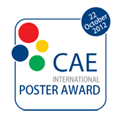
| |
EnginSoft - Conference Abstracts
EnginSoft International Conference 2010 |
Parametric tool as support for designing low energy buildings |
Avesani Stefano - Institute for Renewable Energy - Eurac Research |
Abstract |
Building designing process is a decisional process involving several interdisciplinary fields and aspects that must end with the fulfilment of the design objectives in the respect of technical imposed targets, requirements and constraints. The coming into force of the energy standards add a new mandatory aspect to be considered in the design from the general concept decision phase. In a optic of a effective and efficient design process (Integrated Design Process – IDP), an holistic design approach (e.g. envelope features in connection with the energy plant layout and operation) is needed besides a precise definition of design details (e.g. thermal bridge calculation). In this optic, as written in the new EPBD [1], the use of static and dynamic designing tools should become normal routine for architects and engineers. Unfortunately, design is nowadays still strongly based on experience and best practice. The use of static and dynamic software is mainly used for solving specific problems or for certification purpose in the last phase of realization. In this framework, parameterization and optimization are key concepts for the support of a designing process that wants to lead to high energy performance. The objective of this contribution is to present a methodological approach for the low energy building design based on the parametric analyses and to show how this approach can support architects throughout all the planning stages. The parametric approach needs a validated calculation model (in this case PHPP). In order to support the design process, a first parametric tool has been created thanks to the use of an excel macro. Furthermore, modeFRONTIER has also been used/Tested!? and specific calculations and graphs have been highlighted as strongly useful tools for supporting the design with goal of low energy buildings. In fact, the tool allow a quick evaluation regarding the energy consumption and comfort behaviour of a planned building, so that designers will be able to assess the project both in an early planning stage and in later adaptation phases. It allows easily handling the different variables sketching the main design directions to be taken to achieve the performance targets. The parametric approach shows his importance from the early design phase down to the executive project delivery. In the early design phase, when the building concept is conceived, almost all the design input variables can be parameterized fixing the design targets as optimization objectives and variables limits as constraints. After this preliminary phase, similar parametric analyses can focus just on specific variables chosen – e.g. starting from commercial possible solutions. Hence, in the further design phases a decreasing number of variables would be under assessment, leading to the definition of the complete set of variables defining a building, which achieves the desired energy goals. |
Back to index |



